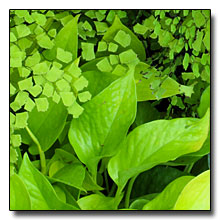
Frondescent Pleasure!
Debbie Teashon
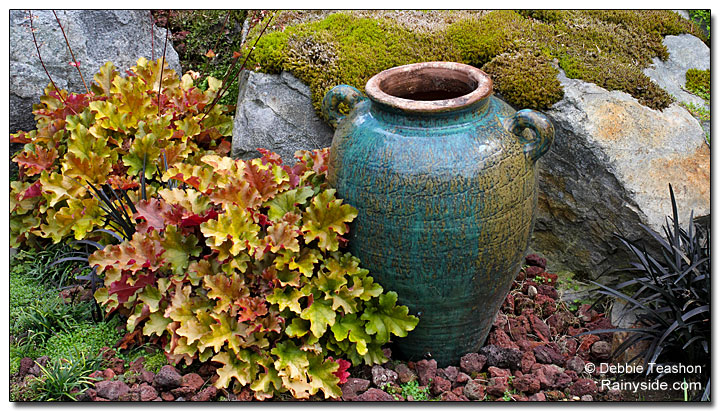
Beautiful garden without a flower in sight.
Some words in our language are treasures. We bring them out on occasions like a fine wine to mark it as unique. The name frondescent is one of those words. When it first came to me, I grabbed onto it and used it every chance I could, because I love foliage.
Almost any leaf that is bumpy or lumpy, brightly hued, textured, variegated, deeply lobed, or unusual, grabs my attention. Writing about a green leaf, or gardening with just a plain green leaf is boring! Give me a funky new blade and a fresh, new word added to my vocabulary, and I'm digging up my garden to make room, or churning out an original article. It's no wonder I wanted to pack this word into the recesses of my brain.
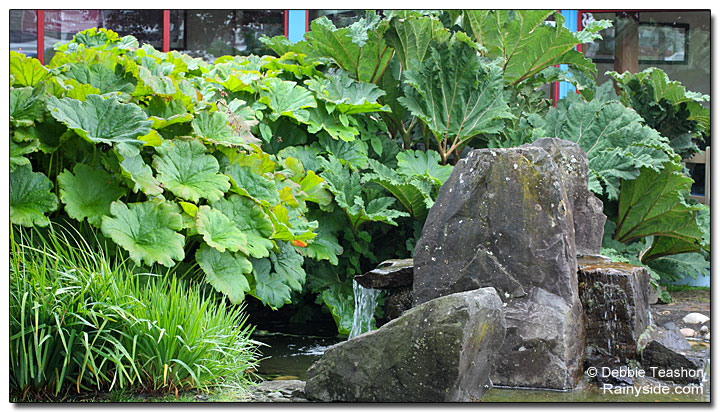
Gunnera manicata on the right and Astilboides tabularis on the left.
Cruising through a nursery catalog that carries stunning photos of remarkable blossoms helps nurseries sell their wares; however, what I wanted to see was the frondescence too! Gardens also need components of fabulous leaf textures, it's not always about the flowers.
Commonly called dinosaur food, it's hard to miss the Jurassic Park size foliage of a Gunnera growing in a garden. Under planted with a mass of coral bells (Heuchera) foliage and lacy ferns.
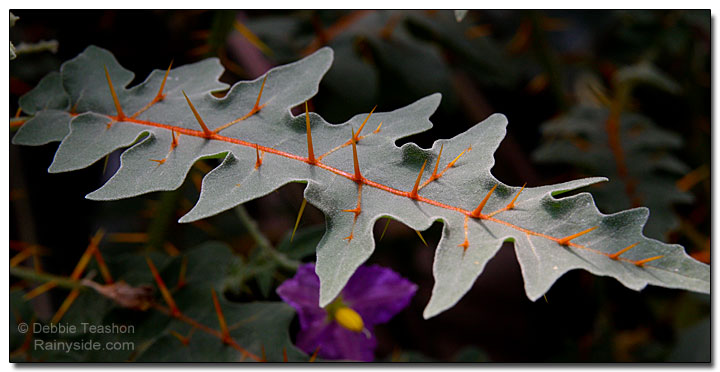
Solanum pyracanthum with wicked orange thorns.
Some leaves look as if an impressionist painter created artistic patterns and textures. While other foliage, such as the porcupine tomato (Solanum pyracanthum) with its neon orange thorns down the middle of the leaf, look like Picasso had a bit of fun with it.
Nature, along with plant breeders, have provided us with an extensive palette of foliage textures, sizes, and colors so the creative person can paint their gardens into glorious masterpieces.
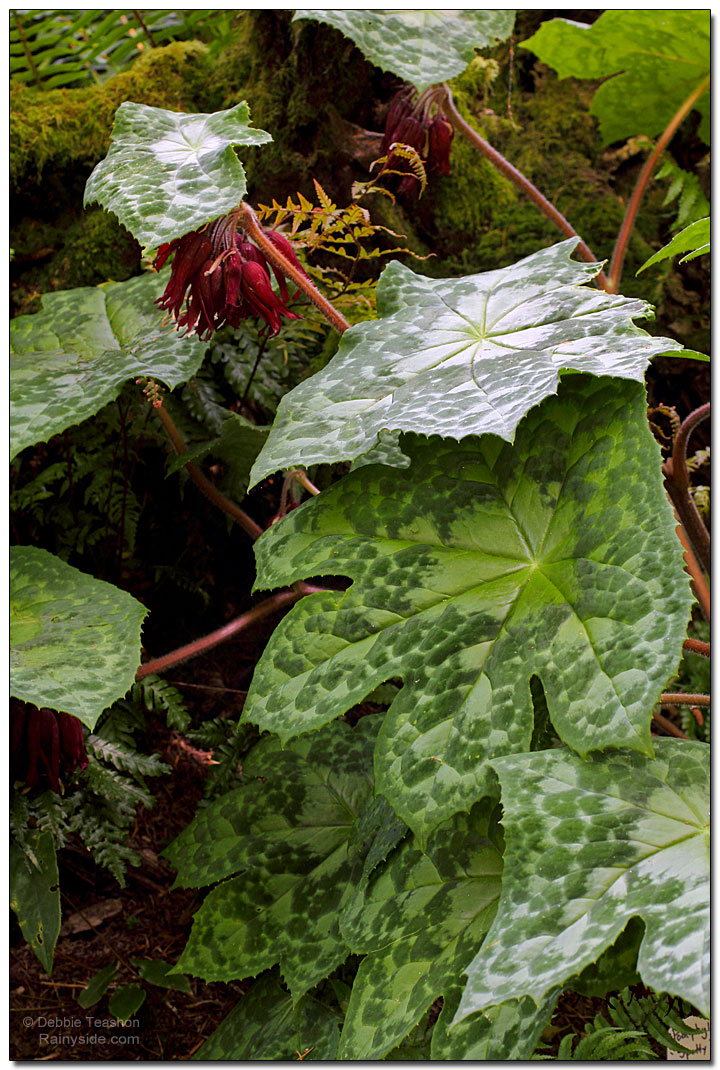
Podohyllum 'Spotty Dotty'
Foliage is the mainstay in the garden. Please don't misunderstand me. I love flowers just as much as the next person does. While blossoms take center stage, the leaves dress the platform. Too many flowers in the garden are too syrupy for my eyes; I need a place to rest them in between the eye candy. That is where beautiful foliage creates balance and harmony, and a place to relax the eyes.
Foliage is an integral part of good design — most garden designers use them intentionally in their garden projects. With all the diversity of size, color, and form in leaves, a person can give rise to combinations of plants that make any onlooker appreciate the garden canvas in front of them, even when nothing is in bloom!
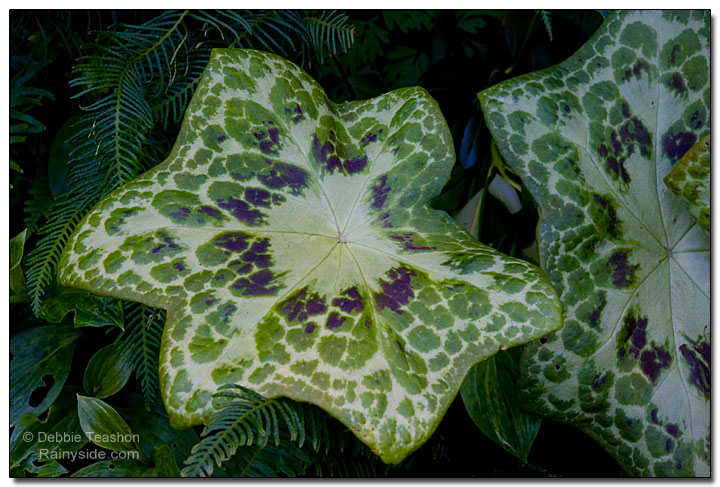
Podophyllum 'Kaleidoscope'
I've toured a few gardens with too many variegated plants packed together. Moreover, I've planted a few containers where I went overboard with variegation. Ouch! My eyes!
I like to call the affliction "variegation build-up." Too many plants with multi-colored foliage, leaves me feeling slightly nauseous. I remember one home where a spotted laurel (Aucuba japonica 'Gold Dust') grew everywhere. They were foundation plants for the home as well as used as hedging for one side of their yard. Whoever planted them; either received an excellent deal from a nursery, or just liked the plants to the point of obsession. Their bright, mostly acidy-gold with green foliage jolted my eyes whenever I walked down their long driveway.
To this day, I dislike this broadleaf evergreen even though I've seen single specimens used as understory plants in a shaded garden with calmer splashes of yellow on its leaves. Unfortunately, I can't get past the gaudiness of my first encounter with the shrub.
One of my favorite books, Consider the Leaf by Judy Glattstein, goes into great detail about using foliage in garden design. Her fabulous textural combinations are enough to make any flower gardener turn strictly to leaf gardening. If you would like to delve into the world of leaves, her book is a great place to start.
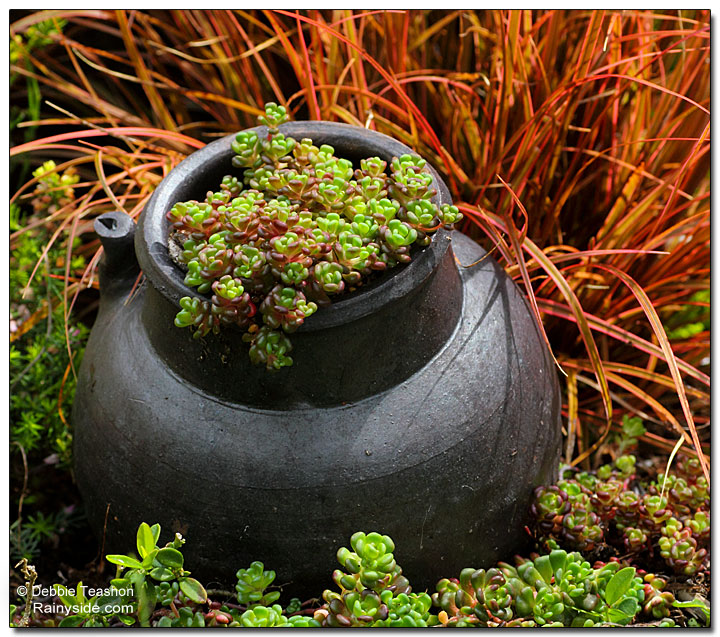
Sedum oreganum ssp tenue and Uncinia 'Belinda's Find'
Also, take a trip to your nearest garden nursery and pick out an exceptional foliage plant such as a Heuchera for a sunny garden, or a fun one like Abelia grandiflora 'Kaleidoscope' and wander around the nursery. Choose other great foliage plants with the same cultural requirements (sun/shade, water needs, and/or soil) to go with it.
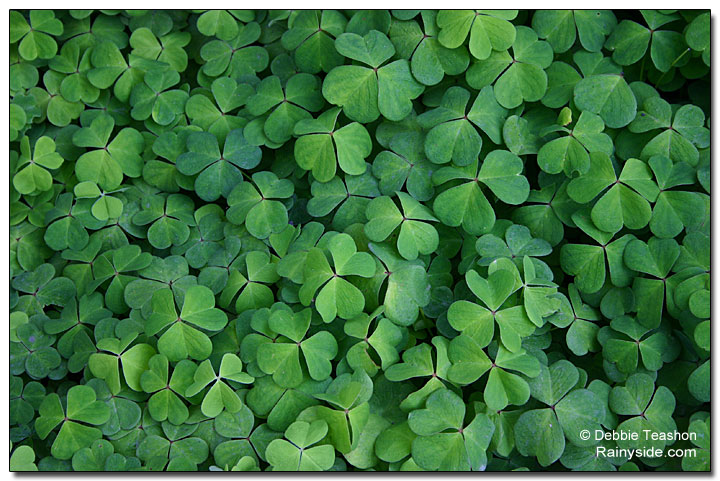
Oxalis oregana
Look for textures, echoes of the same leaf hues, or contrasts in colors or sizes. Let that inner child with his/her magic box of crayons and coloring-outside-the-lines-attitude take over. Turn the inner critic off and have fun with putting a cart full of foliage together. Dare to do something different and leave the flowers out of the design for the moment.
If you add in blossoms, be sure to make your plant choices based on good leaf textures, and is harmonious with your other selections. When the flowers fade, your garden will continue giving you a lot of frondescent pleasure!
Article originally written for Garden Life newspaper column in the Kitsap Weekly.

Gardening for the Homebrewer: Grow and Process Plants for Making Beer, Wine, Gruit, Cider, Perry, and More
By co-authors Debbie Teashon (Rainy Side Gardeners) and Wendy Tweton
Copyright Notice | Home | Search | Articles

